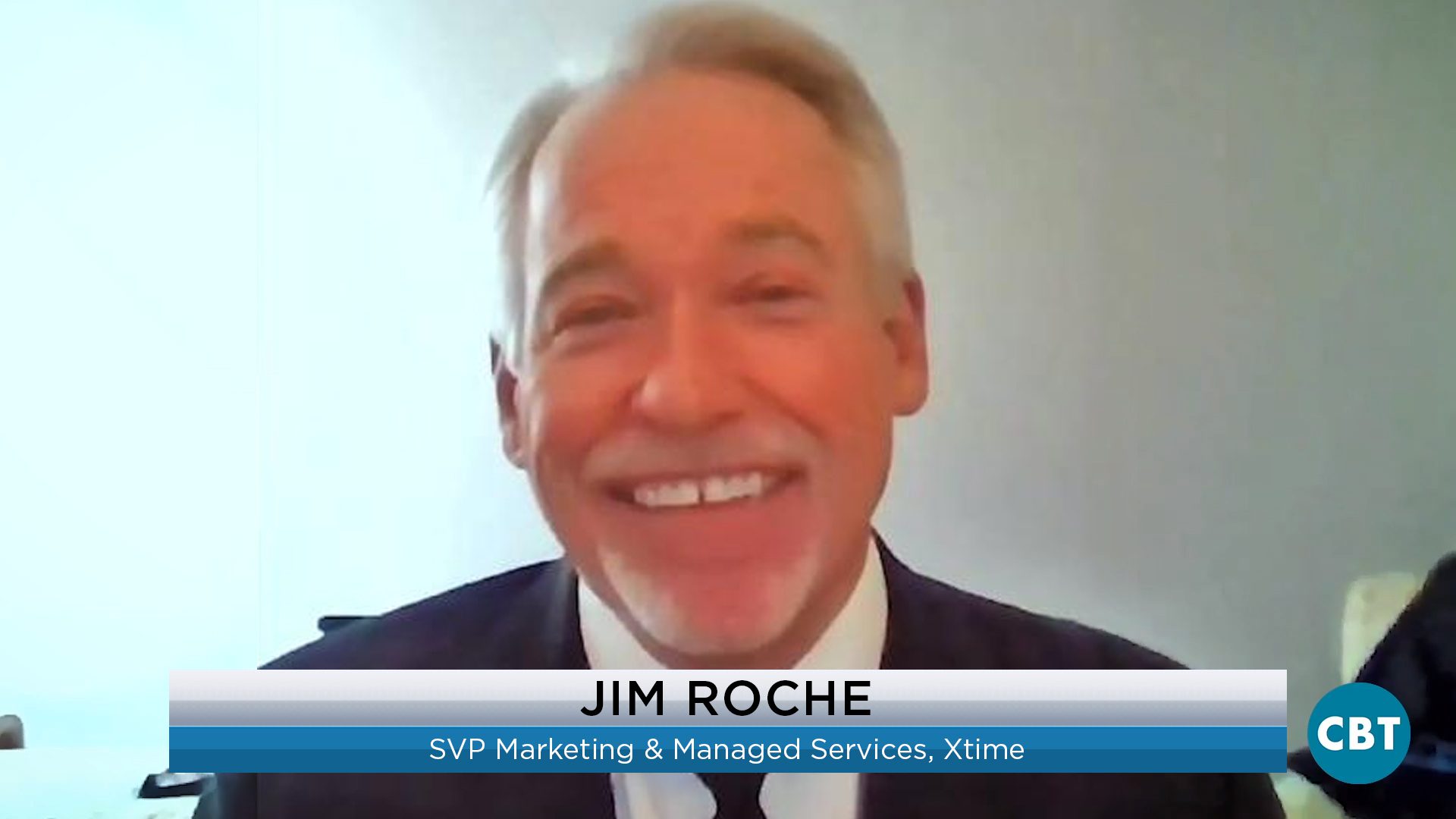The quality of your customer’s overall experience in the service department can have lasting consequences on your dealership; good or bad. In anticipation for this year’s changes in the automotive retail market, our guest today has some great strategies for delivering the unique buying experiences that customers expect today. Joining Jim Fitzpatrick is Jim Roche, vice president of marketing and managed services at Xtime to discuss what dealerships can do today to become more customer-centric.
VIDEO TRANSCRIPTION:
Jim Fitzpatrick: So glad you took the time out of your busy schedule, I understand you’re
crisscrossing the country with dealers, right?
Jim Roche: We’re crisscrossing the country Jim, and it’s great to see you. Fixed operations is becoming more important to dealer health, so we’re in demand.
Jim Fitzpatrick: Yeah. Boy, that’s for sure. How do you see the automotive retail market changing in the upcoming year?
Jim Roche: So in 2019, I think we’re going to see two primary things continue. The first of course is margin compression, that’s on the vehicle sales side. We’re going into the down part of the cycle, so I think we’re going to move less units, but we’re going to continue to see margins compress. The second is rising consumer expectations. That’s been a trend for a number of years, primarily driven by what consumers, the experiences they get outside of automotive. Think Uber, Amazon, and all the other things that create these technology-enhanced experiences, those drive up our expectations of what we should be getting from inside automotive, and I think we’ll continue to see that go up.
Jim Fitzpatrick: Dealerships have traditionally placed an emphasis on each sales transaction. What’s caused this transaction focused business model?
Jim Roche: You know, that’s really interesting. So essentially, it comes out of dealers coming primarily from vehicle sales. If you think about vehicle sales, whether somebody comes in and buys one every four years, or six years, or eight years, you don’t know when you’re going to see them again or if you’re ever going to see them again, so the focus is to optimize that vehicle sales transaction, which we understand, that’s natural. The problem with that is that’s crept over into the service side, so you see dealers who become transaction-centric in service. They try to increase the dollars per RO, and those big repair orders are the enemy of retention. So really, you should be going for the opposite in service. You should be trying to keep that customer for their lifetime and make a little bit of money over a long period of time through many transactions, but I think that’s the cause. The cause has been that vehicle sales transaction-centric mindset has bled over into service, and that’s just caused us to have a wrong orientation there.
Jim Fitzpatrick: I’ll go ahead and ask the question before we get all the emails from dealers. So Jim, are you telling us not to make as much money as we possibly can while that customer is in our service drive right now?
Jim Roche: Yes, that is … don’t optimize the transaction because you’ve got to think about the lifetime spend of that customer, not just in service, but in sales. So great, you can slam a $500 RO on them today, and they’re never going to come back. Rather, get an average $250 RO, over 10, 20 visits over that many years. And here’s the key thing. One of the things that [inaudible 00:03:16] in its 2018 service industry study is that if you visited the dealer in the last 12 months for service, you’re 74% likely to go back to that dealer for the next vehicle purchase. If you didn’t visit the dealer for service in the last 12 months, you’re only 35% likely.
Jim Fitzpatrick: Wow.
Jim Roche: Exactly. So keeping that customer coming back, keep in mind the average gross margin in service is 47%, so you make that 47% gross margin over a long period of time, if you retain them, if you keep them coming back, then they’re that more likely to buy their next vehicle from you again, and the cycle repeats itself.
Jim Fitzpatrick: And of course we’re not advocating here that if work needs to be done on the vehicle to hold off on that until the next trip. You’re saying just do the essentials, stick to what’s got to get done, right?
Jim Roche: Yeah, absolutely. I think the selling philosophy for dealers going forward as they adopt a more customer-centric mindset, your selling philosophy should be, sell what the factory recommends and anything that fixes an immediate and identifiable problem. Those are the two guardrails for selling philosophy in service. Factory recommendations and whatever fixes an immediate and identifiable problem.
Jim Fitzpatrick: Right. How can dealerships transition to becoming more customer-centric?
Jim Roche: First, we’ve just got to really change our mindset to putting the customer at the center and get it to a bullseye with a customer at the center. There’s so many things. You have to make sure that your leadership is behind being customer-centric, your culture, your people, your training, and today, a really, really important component is technology. Today’s consumers expect a technology-enhanced experience, so you’ve got to really be thinking about that. To give you an example, many, many customers when offered the option want to schedule their service online, yet many, many don’t. The number one reason why customers don’t schedule online today, 45% say they weren’t aware that they could.
Jim Fitzpatrick: Wow. Wake up call.
Jim Roche: Well, this isn’t a technology problem, it’s an awareness problem.
Jim Fitzpatrick: Right.
Jim Roche: Making sure that we have mobility solutions, ride-hailing, ride sharing is becoming a big thing, offer Lyft options to your service customers. Make sure you’re offering, all of your services to them are available by mobile device. Be price transparent, and many, many other things. But it all comes down to, if you boil it down, it comes down to providing that technology-enhanced experience that keeps today’s dealer in step with all the other experiences we as consumers are having.
Jim Fitzpatrick: Sure. And consumers expect that from dealers now, right?
Jim Roche: Oh, I think so. This goes back to one of the two trends next year, Jim, is rising consumer expectations. We have all of these things happening for us from Amazon, or Uber, or Delta.com, or Open Table, or all these other thousands of other apps that make our lives easier, those raise the expectations of what we think should happen in automotive, and the genie’s out of the bottle, there’s no going back. Dealers have got to get on side to providing that technology-enhanced experience of putting the customer at the center.
Jim Fitzpatrick: Sure. What are some of the longterm benefits of this transition for dealerships?
Jim Roche: You know, that’s really literally and figuratively the million dollar question. If you become customer-centric, if you put the customer at the center, and through that, you really own the customer, then you’ve got a lock on the future because if you think about everything that’s going on in automotive now, all the turmoil about different models, there’s EVs and autonomous vehicles and subscription services. What’s the future going to hold? If you as the dealer own the customer, that doesn’t really matter. You become that customer’s transportation provider, their transportation solution provider, regardless of what the future holds. So to me, one of the big keys to dealer profitability in the future is making sure that they have that customer and then come what may, you always have the customer.
Jim Fitzpatrick: Yeah, that’s so true. And customers will give you their business if in the event they trust you, they like you, you’ve taken good care of them over the years, they will continue to come back, and you don’t have much to worry about with regard to interruption among competitors coming in on those customers, if it’s done right. And of course, not all customers, but the majority of them.
Jim Roche: The majority of them. If you’re the trusted source for transportation. When I hear about these new things or I’m thinking about doing something, I’m going to go to the trusted source first, and that’ll be the dealer.
Jim Fitzpatrick: Sure. And in many cases, the dealer representation, or representative, I should say, that service advisor on the service drive is so vitally important, aren’t they, to the success of that relationship with that customer because in many cases, customers will identify with that individual and want that individual to be taking care of them when they come into the service drive, correct?
Jim Roche: Absolutely.
Jim Fitzpatrick: I mean, once that relationship is built successfully.
Jim Roche: If you look at all of the people in a dealership, the service advisor has more face-to-face interaction than anyone else in the dealership, so they really are the public face when it comes to representing the dealership and the solutions that they have. And we’re seeing the role of the service advisor is evolving. 20 years ago and further back, it used to be you would take a technician because of their product knowledge and put them on the service lane, but the skillset is evolving to more of a barista type skillset. The number one quality that we hear dealers say and service leaders say that they look for now is empathy.
Jim Fitzpatrick: So when hiring, it’s a different skillset that we’re looking for when bringing those service advisors in, right?
Jim Roche: Absolutely. You want to look for people, especially in today’s automotive environment, you want people maybe with customer service. I was talking to a dealer who is in Southern California, and they were telling me that they look for people with theme park experience. Disney or Sea World, people who are used to interacting with the public. They’re also looking for, as I mentioned, empathy is a big quality. People who are comfortable with change because the automotive environment and consumer expectations are changing so fast, people who are set in their ways are going to be uncomfortable with the pace of change and how we have to evolve. And of course, because consumers want a technology-enhanced experience nowadays, you’ve got to have people who are really, really comfortable in interweaving technology in how they handle the customer. So yeah, very rapidly changing skillset.
Jim Fitzpatrick: Hey, let me switch gears a little bit here. You wrote a book last year and launched it at NADA, and I understand, word has it you’re working on another one?
 Jim Roche: In fact, you’re right. I have finished another one. The book that we published in early 2018 was called Fast Lane, and the new book will be called Fast Break: How to Create a Customer-Centric Operating Philosophy. And it’s essentially about putting that customer at the center and all of the considerations that dealers have to have to try and bring that together to produce a really customer-centric result.
Jim Roche: In fact, you’re right. I have finished another one. The book that we published in early 2018 was called Fast Lane, and the new book will be called Fast Break: How to Create a Customer-Centric Operating Philosophy. And it’s essentially about putting that customer at the center and all of the considerations that dealers have to have to try and bring that together to produce a really customer-centric result.
Jim Fitzpatrick: And when will that book be released for dealers to get their hands on?
Jim Roche: It’s being printed as we speak, and it will be available at NADA in 2019 in San Francisco in late January.
Jim Fitzpatrick: That is phenomenal. Certainly, we want to have you back on to talk about the book once it’s released, and then also talk to you out at NADA as well, so save us some time out there. Looking forward to seeing the book, your last one was phenomenal, and congratulations to you on the success of that, but thanks so much for your time today. Jim Roche, Senior Vice President of Marketing and Managed Services at Xtime, thanks so much for joining us, we really appreciate it. Your insight and your content that you provide to our viewers is always world class, so thanks so much.
CBT Automotive Network. The number one most watched network in retail automotive. CBT is a part of the JBF Business Media Family.









